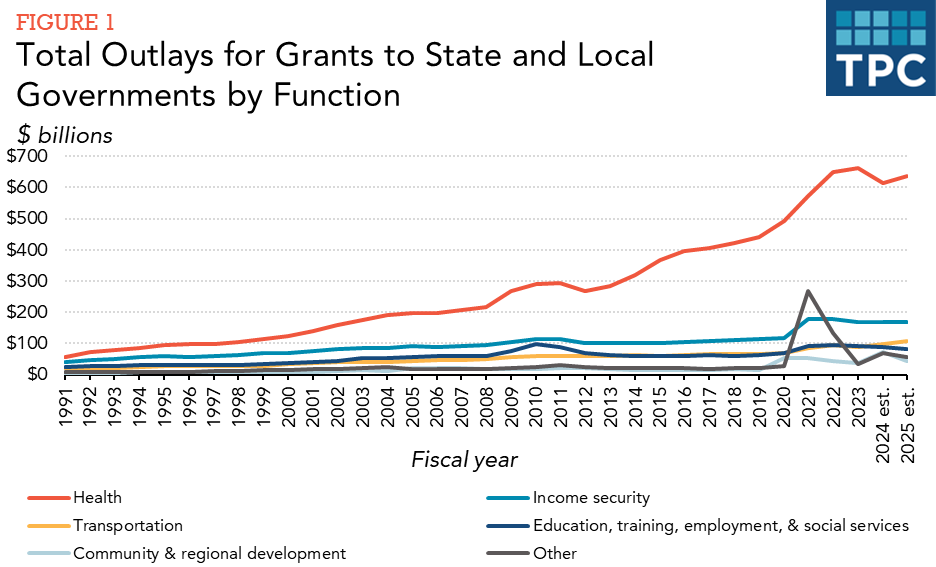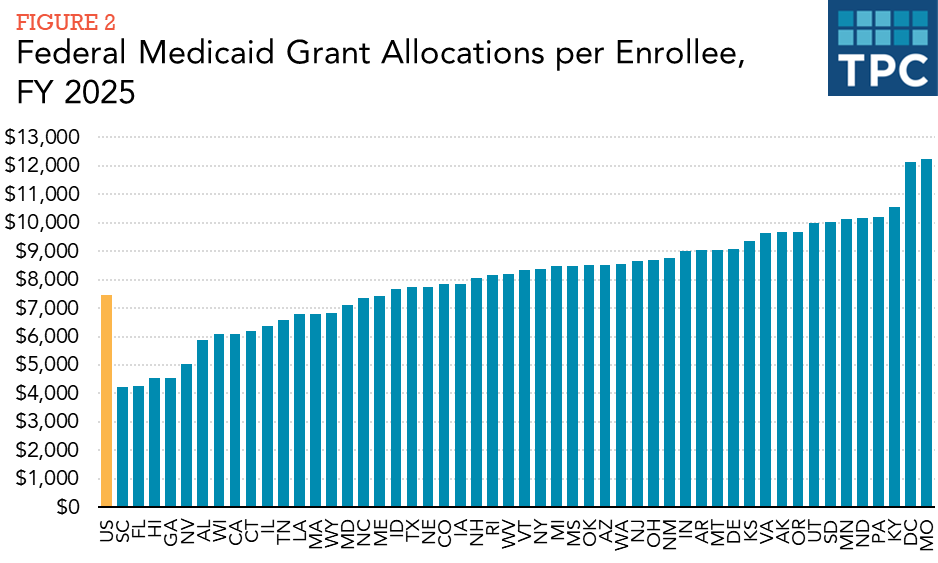Ongoing uncertainty about the fate of a Trump Administration pause on federal payments to state and local governments has raised questions about what services these governments provide and how people and communities could be affected.
To help answer these questions, TPC compiled data from funding requests prepared by several major federal agencies for fiscal year 2025. Importantly, these figures represent amounts requested, but Congress ultimately determines final appropriations, which may differ from the original requests. Additionally, even after Congress appropriates funds, the Office of Management and Budget controls apportionment, meaning that agencies may not receive the full amount at once or could face restrictions on how funds are distributed and spent. While not exhaustive, the dataset captures over three-quarters of all projected federal funding to state and local governments and points to some fundamental patterns and trends. We supplemented these data with historical information from the US Office of Management and Budget.
1.) Federal fund allocations in 2025 are significant
States and localities provide many essential services for their residents, including healthcare, education, and infrastructure. To do so, they rely on federal funds for programs such as Medicaid or the US Department of Education’s Title I program. On average, federal grants constitute about one-third of total state funding, and cover over half of state healthcare and public assistance spending.
In the current fiscal year (which started October 1st 2024), federal agencies budgeted an estimated:
- $1,916 per person for Medicaid and Children's Health Insurance programs;
- $524 per person for education programs;
- $183 per person for transportation programs; and
- $175 per person for programs that support children and low-income families (administered by the US Department of Health and Human Services’ Administration for Children and Families).
2.) Federal funding has grown over time
Federal funding has expanded significantly in response to rising costs, growing demands, and program expansions. Looking at historical grant payments in addition to proposed allocations in the current fiscal year, federal grants to states and localities have nearly quadrupled since 2000, driven primarily by the expansion of healthcare or Medicaid (Figure 1).
In fiscal year 2025, healthcare allocations are projected to represent nearly 59 percent of federal grants to state and local governments, with Medicaid as the single largest federal grant-in-aid program.

Source: Office of Management and Budget, Executive Office of the President, “Budget FY 2025 - Table 12.3 - Total Outlays for Grants to State and Local Governments by Function, Agency, and Program.”
3.) Medicaid spending has grown faster than the economy, putting pressure on other programs
According to data from the Centers for Medicare and Medicaid Services, between 2000 and 2023 total Medicaid expenditures grew by an average annual rate of 6.7 percent, while the economy (gross domestic product) grew at an annual rate of just 2.2 percent. This has led to declines in the shares of federal grants going to other areas, including highway construction, economic development projects, and support for public education.
4.) Medicaid enrollment and federal funding per enrollee varies significantly across states
On average, about one in four Americans is enrolled in Medicaid, and the federal government provides about $7,500 per enrollee in funding. However, the picture looks different depending on the state:
- In Utah, only 10 percent of Utah's population is enrolled, compared to 41 percent in New Mexico.
- Missouri receives an average of $12,250 per Medicaid enrollee, while South Carolina receives just $4,200 per enrollee (Figure 2).

5.) Reliable federal funding is critical for states and localities
States and localities are generally prevented from borrowing to cover gaps between revenues and expenditures because of balanced budget rules, debt limits, and other restrictions. As a result, they rely on the federal government in uncertain economic times as well as partnering with the federal government to provide critical public services to their residents.
Many states already face severe budgetary challenges and localities continue to wrestle with implications of a remote workforce for local property taxes, sales taxes, and other revenues. As a result, pauses, interruptions, or cuts to federal funds could create significant hardships.
